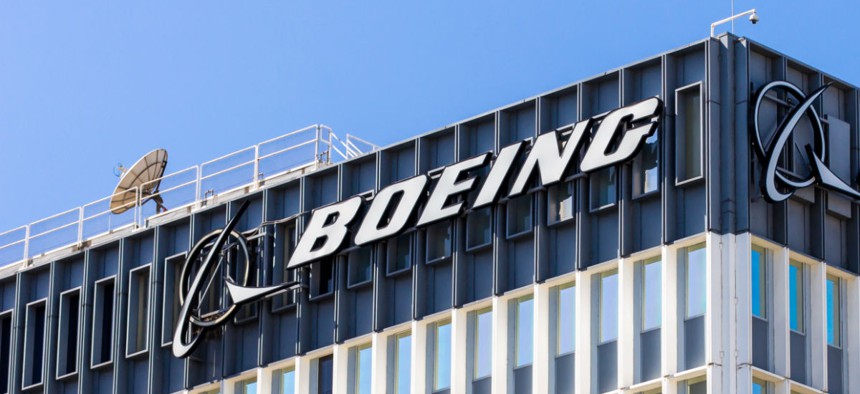Boeing Needed International Help to Build New Training Jet
A decade of layoffs forced the US giant to seek engineering and manufacturing talent from partner Saab.
It seemed so all-American: a U.S. aviation giant unveiling its newest military jet to flashing lights and thumping heavy-metal music. But the sleek twin-tailed T-X — Boeing’s candidate to become the U.S. Air Force’s next pilot trainer — couldn’t have made it to the dolled-up St. Louis hangar without a good deal of international help.
For all its deep aviation heritage, the Chicago company needed a partner on the T-X bid. A decade of engineering layoffs had left the venerable American firm without the workers needed to add the trainer competition to its existing workload, particularly with the Air Force requiring demonstration aircraft with a relatively quick turnaround. It also needed a way to do it more cheaply than past endeavors.
So the maker of the F-15 Eagle and F/A-18 Super Hornet teamed up with Saab — builder of the Gripen 4.5-generation fighter jet — to develop a T-X candidate. And less than three years after the two firms announced their partnership, they have now unveiled their first two aircraft, which are expected to fly by year’s end. That’s pretty fast for an American defense firm.
While officials from neither company would say just what parts of the plane were developed in Europe, Saab is believed to be manufacturing large portions of it. In June, a large Russian cargo plane believed to be carrying sections of the new aircraft flew from Sweden to the U.S.
But if the trans-Atlantic partnership moved fast, it also invited risk, something the Air Force wants to avoid.
“I’m not saying this thing is doomed. It’s just that I’m uncomfortable with a big disconnect between engineering and design and manufacturing,” said Richard Aboulafia, vice president for analysis at the Virginia-based Teal Group consulting firm. “It adds risk, it gets rid of a core company advantage, and frankly, there are just huge advantages of having designers and manufacturers co-located.”
Aboulafia cited Boeing’s need to lean on its partner for engineering.
“Outsourcing design — that appears to have a lot more complications than benefits,” he said. “It adds risk and it gets rid of a core capability, a core differentiator.”
In a promotional video released by Boeing, Ted Torgerson, the program manager, played down the risk.
“These aren’t prototypes. These are our first two jets for the program,” Torgerson said. “It’s critical that we show that cause we’re competing against off-the-shelf airplanes and we’re just as low-risk as they are.”
Torgerson was referring to the Lockheed Martin-KAI T-50 and the Leonardo-Raytheon T-100, two T-X candidates that are already in production for foreign air forces.
Those companies’ executives say their planes can meet the Air Force’s requirements without a lot more design and development work that could stretch costs, schedules, or requirements — a dig not only at Boeing, but at Northrop Grumman, whose Scaled Composites experimental-aircraft division quickly built its own prototype T-X candidate.
The T-X program is just part of a growing Boeing-Saab relationship; the two are also collaborating on an artillery version of Boeing’s Small Diameter Bomb. But the trainer effort shows how big American defense firms have difficulty manufacturing new aircraft quickly and must rely on more nimble companies, particularly when budgets are tight.
Now that its first two T-X planes have come together, Boeing appears to be putting an American face on the project.
A press release distributed on Tuesday showed Saab’s logo under Boeing’s, but mentioned the Swedish firm only once. In the nearly nine-minute promo video, Saab is not mentioned at all. A photo of the plane being assembled shows a large American flag draped on the plant’s back wall.
Boeing officials say they are not playing down Saab’s role. Boeing spokeswoman Deborah VanNierop noted that Saab President and CEO Håkan Buskhe participated in the rollout ceremony and that other company officials were also on hand.
“Saab is not in a backseat role,” VanNierop said. “This is very much a partnership.”








